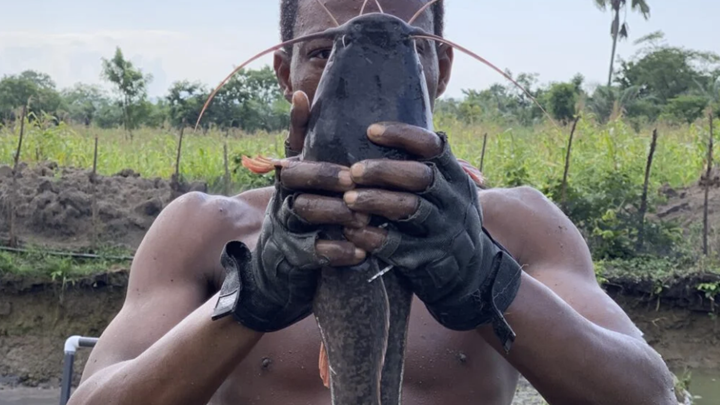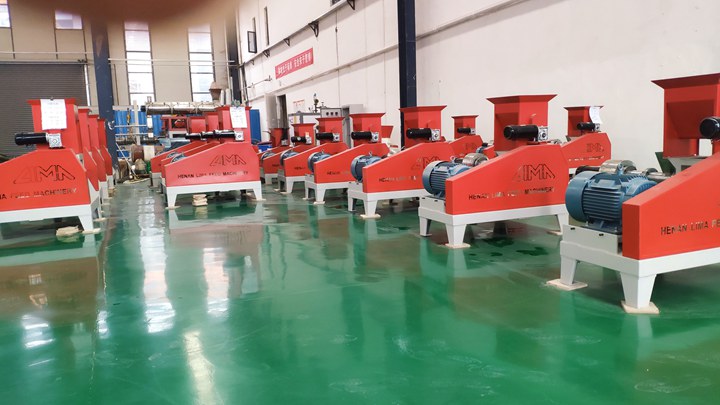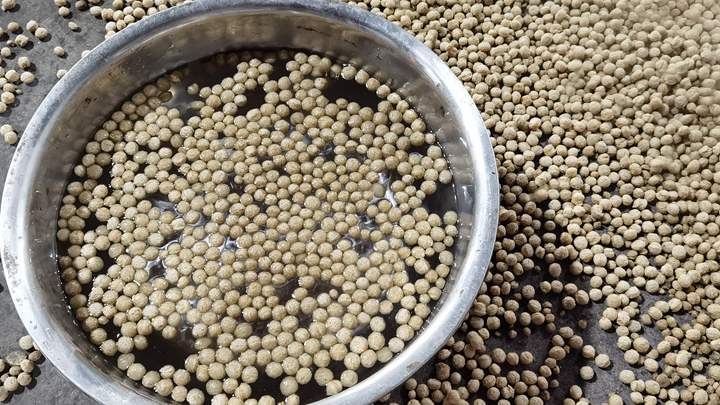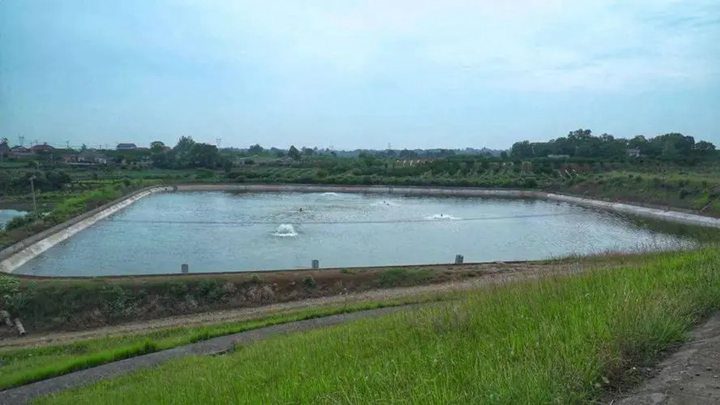The practice of catfish farming in Ghana is wonderful. This blog assists you to start. It includes issues relating to location, licensing, and viability of the venture.
Understand farm layout, choice of seeds, and financial management. This section covers key technical numbers, soils, water, and stock fencing. Begin with strong basics.
When starting a catfish farming venture in Ghana, one of the challenges you may face is ensuring the fish receive high-quality, nutritious feed. Traditional methods of feeding can be time-consuming and often result in inconsistent feed quality. This is where investing in specialized equipment like the Lima Fish Feed Pelletizer can make a significant difference.
- What Are the Initial Steps for Catfish Farming in Ghana?
- How to Select the Right Location for Catfish Farming in Ghana?
- What Equipment is Needed for Catfish Farming in Ghana?
- How to Construct Ponds for Catfish Farming in Ghana?
- How to Manage Feeding and Nutrition for Catfish in Ghana?
- How to Harvest and Market Catfish in Ghana?
- How Lima Fish Feed Extruder Machine Help With Your Catfish Farming Business?
- Conclusion
What Are the Initial Steps for Catfish Farming in Ghana?
1. Site Selection
Pick a site with water pH of 6.5-8.5. Soil tests check clay and sodium. Close to markets within 10 km saves money. Access to 220V electricity helps work. Avoid flood areas with over 500 mm rain yearly.
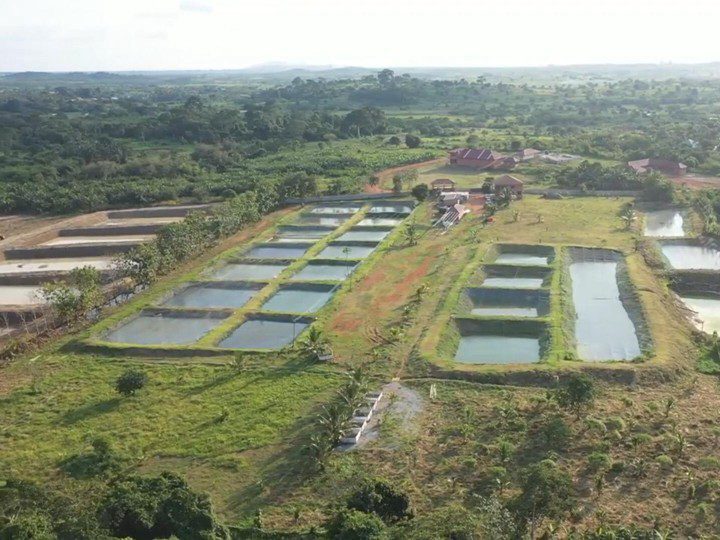
Catfish farming in Ghana needs good fencing 2 meters high. Choose wisely for the best results.
2. Permits Acquisition
For farms, get EPA license. Get land-use approval for 1 hectare. Also, aim for water rights for 1000 m³/day. Health checks per Act 851. Fisheries permit No. FA5678 is a must. These make catfish farming in Ghana safe and legal. Permits protect everyone and everything.
3. Feasibility Study
Check market demand for 50 tons/year. Look at prices GH₵30/kg. Starting costs GH₵500,000. Feed costs GH₵15/kg, labor GH₵10,000/month. Risks like disease matter. Catfish farming in Ghana needs careful study. It shows if the farm will work well.
4. Farm Design
Make ponds 500 m² and tanks 100 m³. Aeration gives 5 mg/L oxygen. Drainage changes water daily. Feed storage holds 1 ton. Quarantine tanks 50 m³ keep sick fish safe. Fencing 2 meters high protects the farm. Design impacts catfish farming in Ghana a lot. Plan it right.
5. Seed Selection
Pick good seeds 5-10 cm long from hatcheries. They ensure 90% survival. Look for traits fighting Aeromonas. Inspect seeds for health. Adjust to 25°C farm conditions. Catfish farming in Ghana needs quality seeds to grow well. Good seeds make strong fish. Choose wisely.
6. Budget Planning
You should plan GH₵200,000 for ponds. Feed costs GH₵15/kg. Equipment costs GH₵50,000. Labor costs GH₵10,000/month. Loans might help with 10% interest. You must budget for 10% extra. Catfish farming in Ghana needs good planning. It keeps money managed well.
7. Improving Growth and Reducing Waste:
The Lima Fish Feed Extruder Machine processes raw materials into uniform, dense pellets, which not only improves the nutritional value of the feed but also ensures the fish get the most out of every meal. With the ability to control pellet size and consistency, you can cater the feed to the specific needs of your catfish at different growth stages, leading to faster growth rates and reduced feed wastage.
How to Select the Right Location for Catfish Farming in Ghana?
1. Water Quality
Fish need good water. Keep pH at 6.5-8. Anything above 5 is desirable as far as oxygen is concerned. Turbidity should be less than 25. Catfish farming in Ghana requires water temperature of between 26-30 degrees. Check nitrogen and phosphorus. Filter water to purify it. Calcium and magnesium are important. Bad water hurts fish. Test water often.
2. Soil Type
Soil must be right. Sandy clay loam is the most suitable. Maintain the pH of the solution between 6 and 8. Farming catfish in Ghana requires high organic matter. Check soil’s water-holding ability.
Avoid bad areas. Geo-membrane liners should be used to prevent leakage. Fish growth depends on soil stability. Soil should be measured frequently in order to obtain maximum accuracy.
3. Accessibility
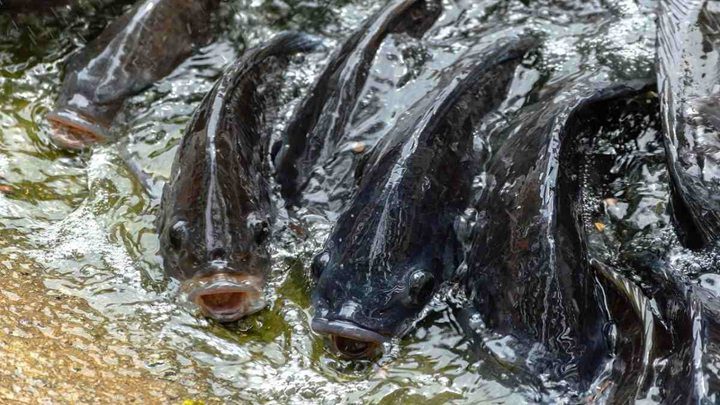
Easy access is key. Roads must be wide. Catfish farming in Ghana requires appropriate highways. Use strong bridges. Check transport options. Comfortable transport makes the fish comfortable. Ensure fuel is nearby. Look at local traffic. Fast access benefits fish and workers. A good road makes farm work easier.
4. Climate Suitability
Temperature must be 26-30. Watch for rain patterns. Indeed, catfish farming in Ghana requires stable weather. Measure the humidity and wind. Avoid extreme climates. Seasonal changes matter.
Stable microclimate is good. Climate control is important for fish to grow well. Periodic examination maintains the climate appropriate. It is advisable to maintain the climate within the tank suitable for fish.
5. Proximity to Markets
Nearby markets are best. Fresh fish sell fast. Catfish farming in Ghana reduces cost with short trips. Fewer hours on the road are advisable. Check market needs. Look at competition.
Local markets help. Customers like their fish fresh. Use good roads. New trends arise in the market hence one should ensure to update themselves.
6. Infrastructure Availability
Good infrastructure is vital. Need reliable power. Catfish farming in Ghana requires clean water. Storage facilities help. Internet is useful. Suppliers should be close. Sewage systems have to be efficient. Good infrastructure saves money.
What Equipment is Needed for Catfish Farming in Ghana?
1. Aerators
Aerators create bubbles in water. Fish are more comfortable if they have bubbles. Air is introduced through impellers, paddles, or diffusers. This process increases oxygen levels.
What catfish farming in Ghana requires is good oxygen. They can be 1.5 to 5 HP. There are motors, propellers, and shafts in aerators. The bubbles are healthy for fish and make them grow big and strong.
2. Water Pumps
Water pumps move water. They keep it clean. Submersible pumps go underwater. Centrifugal pumps stay above. Both types are used in catfish farming in Ghana.
Flow rates range from 500 to 1500 gallons per hour. Pumps have motor units, impellers, and valves. Clean water is essential for the overall well-being and development of fish. Pumps are important tools.
3. Netting
It immobilizes the fish to prevent them from getting away. It also blocks predators. Mesh size varies depending on the fish size. Cultured catfish farming in Ghana utilizes nylon or polyethylene nets.
They are resistant to UV rays and have a long durability. There are frames and ropes in nets. They guard ponds and ensure the fish are secure. Dikes are essential for fish security.
4. Feeders
Feeders provide food for fish. They can either be fully automatic or semi-automatic. Automatic feeders are equipped with timers, hoppers and motors. Catfish farming in Ghana employs these.
Feed rates vary between 100 to 500 grams per cycle. The feeding process contributes to the growth of fish. Thus feeders are significant to the provision of nutrients.
5. Tanks
Tanks contain fish and water. They are made of plastic, concrete or fiberglass and differ in size. Catfish farming in Ghana employs the use of tanks ranging from 500 liters to 5000 liters. Tanks have overflow pipes and drains. They offer a structured home environment. The health of fish depends on clean tanks. Tanks are crucial in farming.
6. Testing Kits
Testing kits are used to determine the quality of water. These include pH, ammonia, nitrite, and nitrate. Catfish farming in Ghana requires this sometimes. Kits have reagents, test tubes and color charts.
Testing ensures that water is safe for fish. Clean water is health to the fish and the same applies to human beings. All successful strategies require close monitoring.
| Equipment | Purpose | Capacity | Power Requirement | Durability | Cost (GHS) | Availability |
| Aerators | Oxygenate water | 500-1500 L/h | 1-2 kW | High | 2000-5000 | High |
| Water Pumps | Circulate water | 1000-3000 L/h | 0.5-1.5 kW | Medium | 1500-4000 | Medium |
| Netting | Secure fish | 5×5 m – 10×10 m | None | High | 500-2000 | High |
| Feeders | Distribute feed | 10-50 kg/day | 0.2-0.5 kW | Medium | 1000-3000 | Medium |
| Tanks | House fish | 1000-5000 L | None | High | 3000-10000 | High |
| Testing Kits | Water quality checks | Various | None | High | 500-1500 | High |
How to Construct Ponds for Catfish Farming in Ghana?
1. Site Clearing
The first thing is to clear the land. Eliminate large items such as rocks, sticks and any forms of trash. As for the big items, use a bulldozer to move them around. Small tools are useful for tiny spots.
For catfish farming in Ghana, eliminate all barriers. The soil should have a pH level of 6. 5. GPS helps mark areas. This makes the ground safe for ponds.
2. Excavation
Digging is next. Dig soil to form a pond to a depth of 1.5-2 meters. Employ compactors to compact the ground tightly. Trenches help drain water. Catfish farm in Ghana requires laser levels to level ground. Pumps remove extra water. They guarantee the required depths.
3. Lining Installation
Place liner in the pond. HDPE liners prevent water leakage. Seal joints tightly with glue. In catfish farming in Ghana, it is recommended that sandbags be used in holding liners. They keep it steady. This stops motion and voids. The liners should be as flexible yet strong as possible.
4. Water Inlet
Lay down PVC pipes for water. Filters should be used as a way of isolating debris. Valves control water flow. Catfish farming in Ghana has employed automated methods in the monitoring of levels. Secure pipes with clamps. They stop leaks. This helps to maintain a constant supply of the commodity.
5. Drainage System
Lay drainage pipes to take excess water away from the site. Pond bottom slopes to drains. Catfish farming in Ghana requires check valves to prevent back flow. Perforated pipes work best. These prevent clogging. Dikes prevent water from overflowing in ponds. This ensures clean water.
6. Erosion Control
Grow grass around the pond banks to prevent soil erosion. Install erosion mats for the slopped areas. For catfish farming in Ghana add rocks and geo-textiles. Look for the weak links frequently. Repair them right away. This prevents erosion of the soil. It strengthens the pond.
How to Manage Feeding and Nutrition for Catfish in Ghana?
1. Feed Formulation
Combine soy, fishmeal and corn. Add minerals. It is recommended that protein should be at 30% while fat at 6% and fiber at 4%. Make 4mm pellets. Machines blend everything. This helps growth.
For catfish farming in Ghana to thrive it requires good feed. They avoid waste. It saves ₵100 monthly. Small farms benefit. Careful planning is key. This has to be followed by the farmers if they want to succeed.
2. Feeding Frequency
Fish should be fed 4 times a day. Use feeders. Measure amounts. This makes fish grow. They get a 1.5 FCR. The farming of catfish in Ghana requires good schedule. Small people consume different quantities as compared to big people. It also assists in fish uniform growth. Monitoring times is crucial. Farmers must watch closely.
3. Nutrient Balance
Equate proteins and carbohydrates with fats, including 0.5% vitamins and 1% minerals. Use enzymes too. Farmers check levels. This keeps fish healthy. Catfish farming in Ghana requires proper feeding. They prevent diseases. Regular checks are needed. It makes fish strong. Good nutrition boosts yield. Farmers must plan well.
4. Growth Monitoring
Measure the fish weekly. Use digital scales. Record the weight and length. This tracks progress. Compare with charts. They likewise modify feed should the necessity arise to do so. It keeps fish healthy. Observing color helps too. Farmers keep logs. That data helps decisions. Regular checks boost growth.
5. Feed Conversion Ratio
Check FCR. Determine the feed conversion ratio to weight gain. This shows efficiency. Aim for 1.2 FCR. Farmers track daily. Catfish farming in Ghana requires proper proportion. It helps reduce costs.
High FCR equals higher return. They apply data to advance. Monitoring FCR is key. Farmers must be careful.
6. Supplement Use
Supplements with probiotics, vitamins and minerals should be included. Use 2% supplements. This helps immune systems. They enhance growth. It is the desire of catfish farming in Ghana to have good health.
It prevents diseases. Monitor fish health. Use supplements as needed. Farmers mix supplements well. That ensures even spread. Careful use boosts production. Farmers must follow guidelines.
How to Harvest and Market Catfish in Ghana?
1. Harvest Timing
Unlike other livestock, fish are weighed every 180 days depending on the farmer. Tanks use RAS which stands for Re-circulating Aquaculture Systems. They check for oxygen level at 5 ppm.
Light is switched on for 12 hours in order to support plant growth. Water stays at 28°C. Food is also distributed according to size. To the Ghanaian, catfish farming is synonymous with healthy fish. They examine fish for diseases. A right time is crucial in the matter of harvesting crops.
2. Grading
With mesh graders, workers sort fish according to size. It states that big fish (greater than 300g) attract higher prices. Scales measure weight accurately. Records help keep track.
Grading is being used by catfish farmers in Ghana for quality assurance. Sick fish are removed. Daily weighing maintains fish relevant. Quality checks stop disease. This makes fish valuable more.
3. Ice Storage
Fish are kept cold by flake ice. Fish are kept in coolers. The ice is renewed after every six hours. The refrigerated boxes are used to store and transport fish.
Aquaculture in Ghana employs ice for preservation of catsfish. They check temperature often. The use of ice slows down deterioration thus keeping the fish fresh. Fish are stacked on top of one another and covered with ice sheets. This boosts shelf life.
4. Processing
Machines can be used to gut, scale, and clean fish. Employees conduct quality control on fish. Sharp knives cut fillets. Fish are washed under running water. Catfish farming in Ghana can process fish well. Workers pack fish hygienically. Quality checks stop contamination. Machines are capable of fast processing. This assists in the sale of fish faster.
5. Packaging
Fish is kept fresh using vacuum sealing bags. Moisture-proof materials stop spoilage. Labels help trace fish. The packaging used during catfish farming in Ghana is good. Automated lines pack fast.
Polystyrene boxes cool the fish because of the insulating material used. Workers use gloves in order to maintain hygiene. They check seals often. This halts the entry of air.
6. Distribution Channels
Cold trucks transport fish. They track deliveries using GPS systems. Farming of catfish in Ghana requires the cold chain system. Fish arrived at the retailers on time.
Fish are cooled and kept in cold rooms before they are transported. Humidity is monitored. Checks always make fish to be fresh always. Distribution reaches many areas. This expands the market.
How Lima Fish Feed Extruder Machine Help With Your Catfish Farming Business?
1. Carbon steel
This machine is useful in the farming of catfish in Ghana. It incorporates carbon steel screws and nuts. They are sturdy. The maximum power of main shaft is 18KW. Feeder power is 0.6KW.
Our extruder machine’s dimension is 1500x1200x1300. It can be fed to many fish and the feed produced is healthy for their consumption. It provides the quality and efficiency standards. It increases the productivity of your farm in this tool. It is useful in feeding your catfish.
2. PLC control
As it concerns catfish farming in Ghana, power control lies in the PLC. It can enable computerized methods. Our extruder operates on a programmable logic controller, or PLC. Motor power is 20KW.
Feeding system’s power is 0.5 KW. Control system optimizes output. All of it is synchronized and performs its function cohesively. That makes feeding more efficient. Fish get better food. The farm runs smoother.
3. 120kg/h capacity
Therefore feeding catfish in Ghana must be done efficiently. A machine that has the capacity of crushing 120kg per hour is useful. They have main motor power of 16KW. Feeding system power is 0.3KW.
Our extruder is used for the processing of large quantity of products. For me, it does the job quickly and well. It improves feeding rates. Catfish grow healthier. This helps boost production. Farmers benefit greatly. The machine is essential.
4. Screw diameter
A research finding reveals that catfish farming in Ghana depends on good tools. The screw of our extruder is of 55mm diameter. It ensures uniform feed.
The maximum power is 17 KW, for the main shaft only. Feeder power is 0.4KW. The size of the screw promotes even mixing. This boosts feed quality. Fish eat better. Farmers see improved results. The screw diameter matters.
5. Adjustable cutter
It is imperative for farmers in Ghana to have flexibility. Our extruder also has a cutter blade that is adjustable. It assists to adapt the feed sizes. It is powered by an electric motor of 0.3KW.
Main shaft power is 19KW. It ensures precise cuts. Feed sizes are variable. This serves to address a range of fish sizes. This flexible knifer increases farm productivity.
6. High output
Output is very important in catfish farming in Ghana to meet the market demands. Our extruder is what offers this. It is fairly powerful with its main motor power of 22 KW and feeder system power of 0.2 KW.
This system generates a large amount of feed within a short time. This helps to meet the needs of large fish stocks. Farmers get more done. High output is crucial.
7. Boosting Production and Efficiency
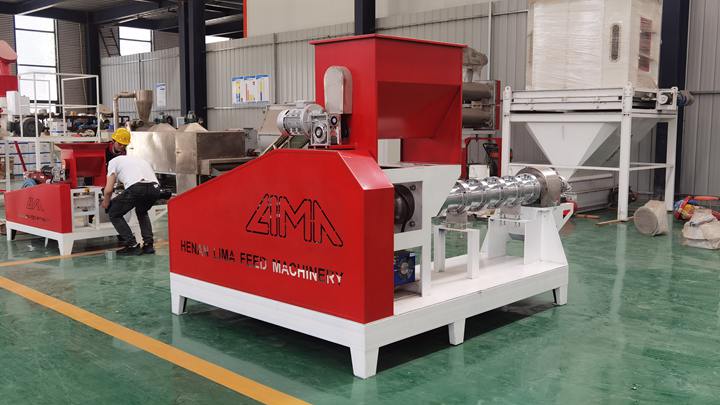
For large-scale catfish farms, time and efficiency are critical. The Lima Fish Feed pellet machine offers an automated solution to quickly produce large volumes of high-quality feed, saving both labor and time. By streamlining the feed production process, you can focus more on managing other aspects of your farm, while still ensuring your catfish receive top-notch nutrition for optimal growth and health.
Conclusion
Catfish farming in Ghana requires planning for it to be successful. Follow steps: concerning permissions, viability and farm layout. Adjust water pH and feed rates. Ensure compliance with licenses. Visit LIMAFEEDMACHINE more. Begin now and expand your catfish farm!

